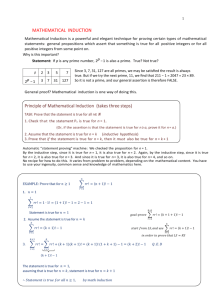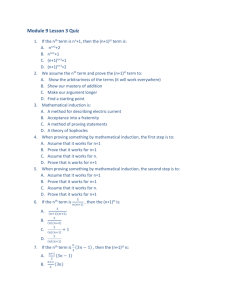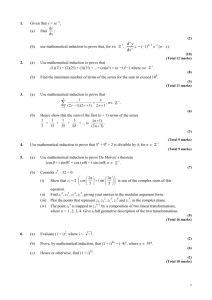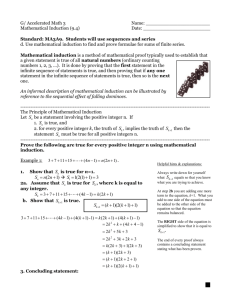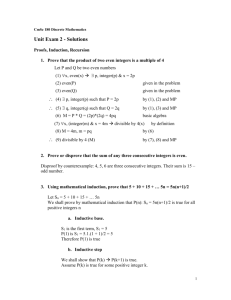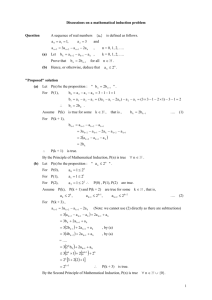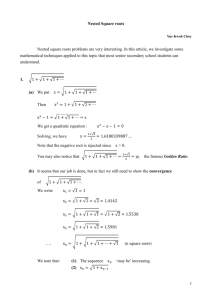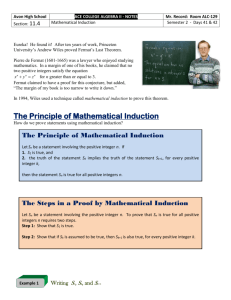0.2 Mathematical Induction
advertisement
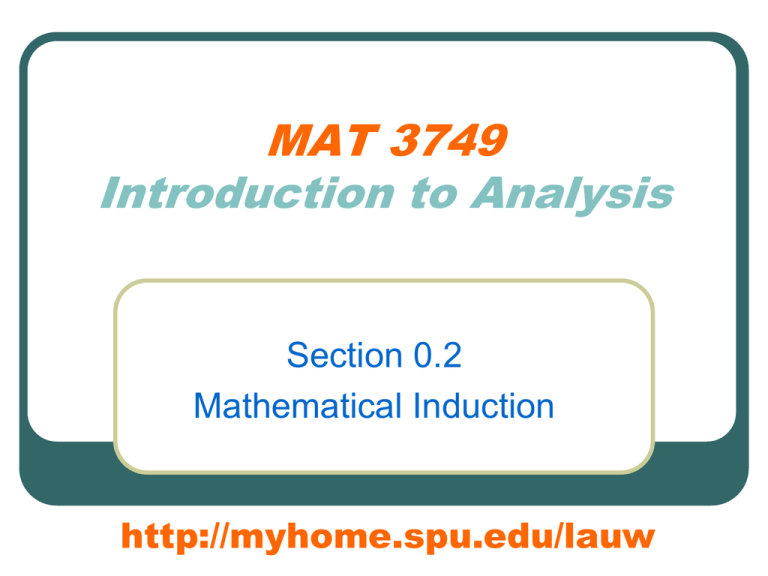
MAT 3749 Introduction to Analysis Section 0.2 Mathematical Induction http://myhome.spu.edu/lauw Preview of Review Review Mathematical Induction References Trench, Section 1.2 Howland, Section 1.2 Bloch, Section 2.5 Be sure to pay attention to the expectations in the class notes. The Needs… Theorems involve infinitely many, yet countable, number of statements. 1 2 n(n 1) n ; n N 2 Principle of Mathematical Induction (PMI) P(1) P(2) P(3) P(66) P(67) P(68) PMI: It suffices to show 1. P(1) is true. 2. If P(k) is true, then P(k+1) is also true, for all k. Principle of Mathematical Induction (PMI) P(1) P(2) P(3) P(66) P(67) P(68) PMI: It suffices to show 1. P(1) is true. (Basic Step) 2. If P(k) is true, then P(k+1) is also true, for all k (Inductive Step) Solutions In this course, it is extremely important for you to follow the exact solution format of using mathematical induction. Do not skip steps. You do not have to follow this format in other courses. Pedagogical Reasons In this course, it is extremely important for you to follow the exact solution format of using mathematical induction. Do not skip steps. Pedagogical Reasons Build-in (extra steps) to help you to • focus on what you need to prove • avoid making mistakes Example 1 Use mathematical induction to prove that 1 3 5 2 2 2 (n 1)(2n 1)(2n 3) (2n 1) 3 2 whenever n is a nonnegative integer. Checklist A 0, 12 32 52 (2n 1) 2 (n 1)(2n 1)(2n 3) 3 Checklist B 12 32 52 (2n 1) 2 (n 1)(2n 1)(2n 3) 3 Checklist C 12 32 52 (2n 1) 2 (n 1)(2n 1)(2n 3) 3 Checklist C 12 32 52 (2n 1) 2 (n 1)(2n 1)(2n 3) 3 Checklist D Proof by Mathematical Induction Declare P(n) and the domain of n. • Basic Step • Write down the statement of the first case. • Do not do any simplifications or algebra on the statement of the first case. • Explain why it is true. • For A=B type, simplify and/ or manipulate each side and see that they are the same. • Inductive Step • Write down the k-th case. This is the inductive hypothesis. • Write down the (k+1)-th case. This is what you need to prove to be true. • For A=B type, we usually start form one side of the equation and show that it equals to the other side. • In the process, you need to use the inductive hypothesis. • Conclude that p(k+1) is true. • Make the formal conclusion by quoting the PMI Example 2 Show that for n 1, 2,3,... n ! 2n1 Example 3 Show that for real number r 1, n 1 ar i 0 i a 1 rn 1 r , for n N


